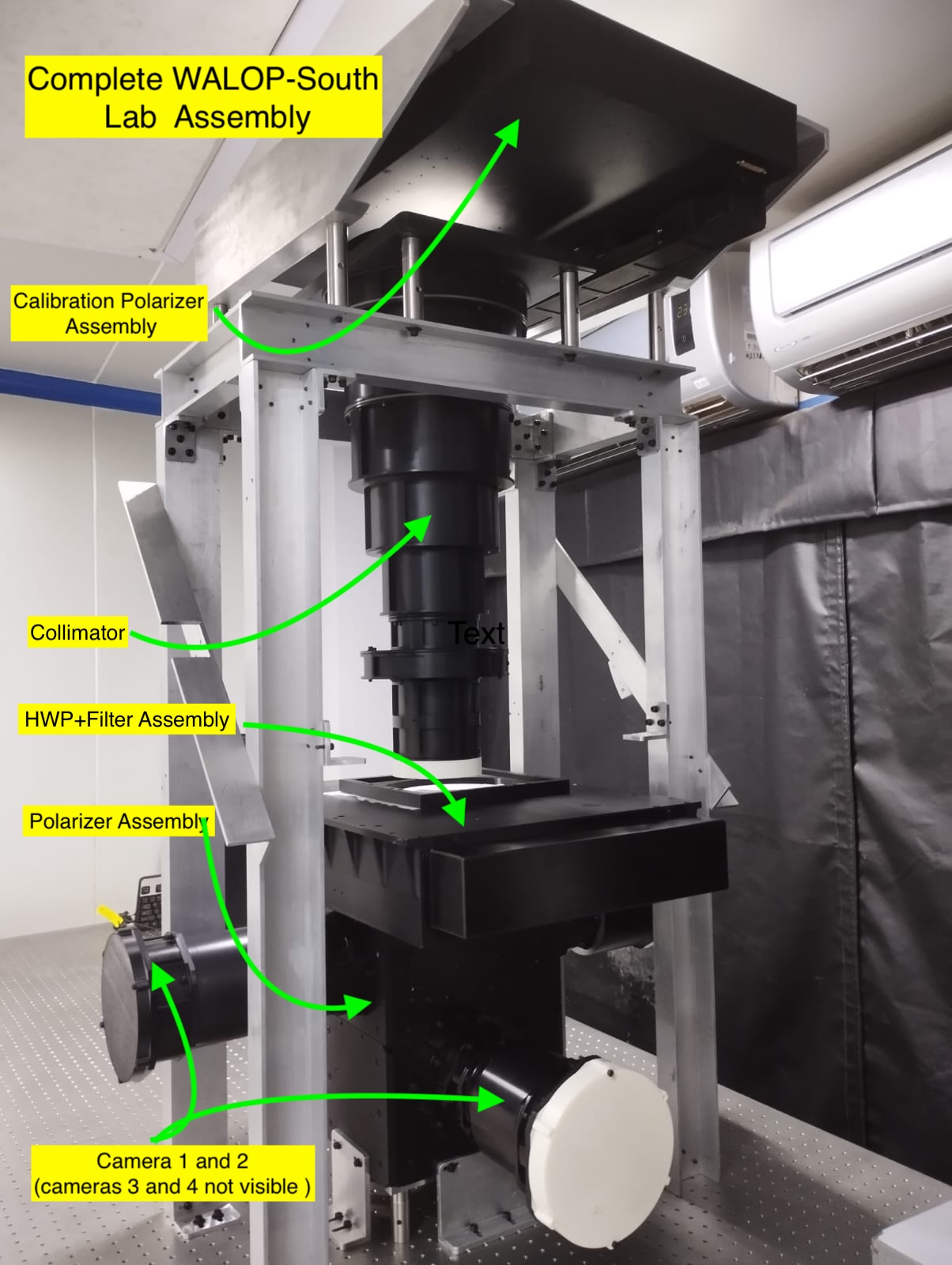WALOP Instruments for PASIPHAE Survey
The Wide-Area Linear Optical Polarimeters (WALOPs) are state-of-the-art imaging polarimeters developed as part of the PASIPHAE (Polar-Areas Stellar Imaging in Polarization High-Accuracy Experiment) project—a global effort to map the interstellar magnetic field structure over large swaths of the sky using optical starlight polarization.
Two WALOP instruments have been developed:
- WALOP-South, currently getting ready for commissioning at the 1-m SAAO telescope in Sutherland, South Africa.
- WALOP-North, currently in assembly, integration and alignment phase at the 1.3-m Skinakas Observatory in Crete, Greece.
WALOPs are designed for simultaneous, wide-field, four-channel linear polarimetry with no moving parts, enabling stable and high-throughput observations. The system uses a custom polarimetric optical design to split incoming light into four beams with different polarization angles, which are then imaged onto different quadrants of a large-format CCD.
These instruments provide:
- High-accuracy polarimetry (~0.1%)
- Wide field-of-view (~0.25 deg²)
- Rapid cadence, suitable for large-area sky coverage
The PASIPHAE survey aims to measure the optical polarization of millions of stars, primarily in high Galactic latitude regions. This data, combined with Gaia parallaxes, allows for tomographic reconstruction of the 3D structure of the Galactic magnetic field and better foreground characterization for CMB B-mode experiments.
The WALOP design is optimized for high stability and efficiency, and its modularity makes it adaptable to other telescopes as well. Data from PASIPHAE will serve as a unique resource for ISM studies, star formation, cosmic dust characterization, and cosmology.
As part of my thesis and ongoing research work, I have led nearly all aspects of the instrument development. The image below shows the WALOP-South instrument assembled and getting characterized in the lab at IUCAA.



